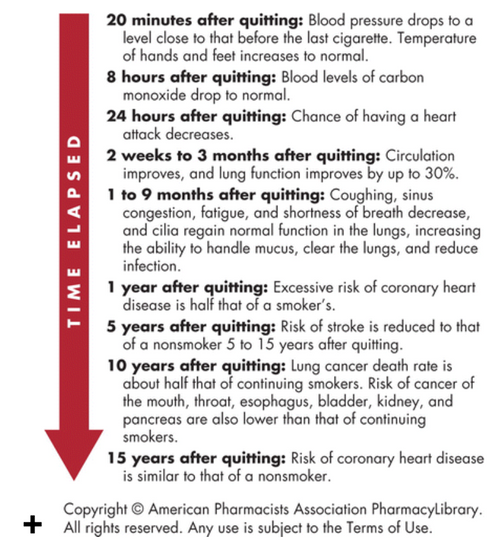Substantial benefits from quitting smoking can be realized at any age. It is never too late to quit to achieve many of the associated health benefits. Some of these health benefits are incurred shortly after quitting, while others are incurred over time. In fact, only 24 hours after quitting smoking your risk for having a heart attack decreases and the numerous health benefits just keep increasing the longer you abstain from smoking. There are many different options for patients wanting to quit smoking including several over-the-counter (OTC) nicotine replacement products.
Nicotine Replacement Therapy:
Nicotine replacement therapy (NRT) products are used to help cigarette smokers quit. Three of the NRT products including the gum, lozenge and patch are all nonprescription. NRT provides smokers with nicotine to help reduce the withdrawal symptoms of nicotine that usually occur after abstinence from tobacco. Therefore, the patients are not exposed to the harmful carcinogens and toxic constituents present in tobacco. NRT should begin on the chosen quit date and all other forms of tobacco should be discontinued on this date. The use of tobacco products in combination with NRT can increase the risks of nicotine related side effects like nausea, vomiting, and abdominal pain.
Nicotine Gum:
Nicotine gum is one option for NRT for people wanting to quit smoking. This gum is available as 2 mg and 4 mg strengths, in original, cinnamon, mint, and fruit flavors. The recommended dosage of nicotine gum is based on the time to first cigarette of the day. If the time to first cigarette of the day is 30 minutes or less from waking up, then therapy should be started using the 4 mg gum. If the time to first cigarette is more than 30 minutes, then therapy should be initiated with the 2 mg gum. During the first 6 weeks of therapy, patients should use one piece of gum every 1-2 hours while awake. Patients can use up to 24 pieces of gum per day if cravings occur between the scheduled doses.


